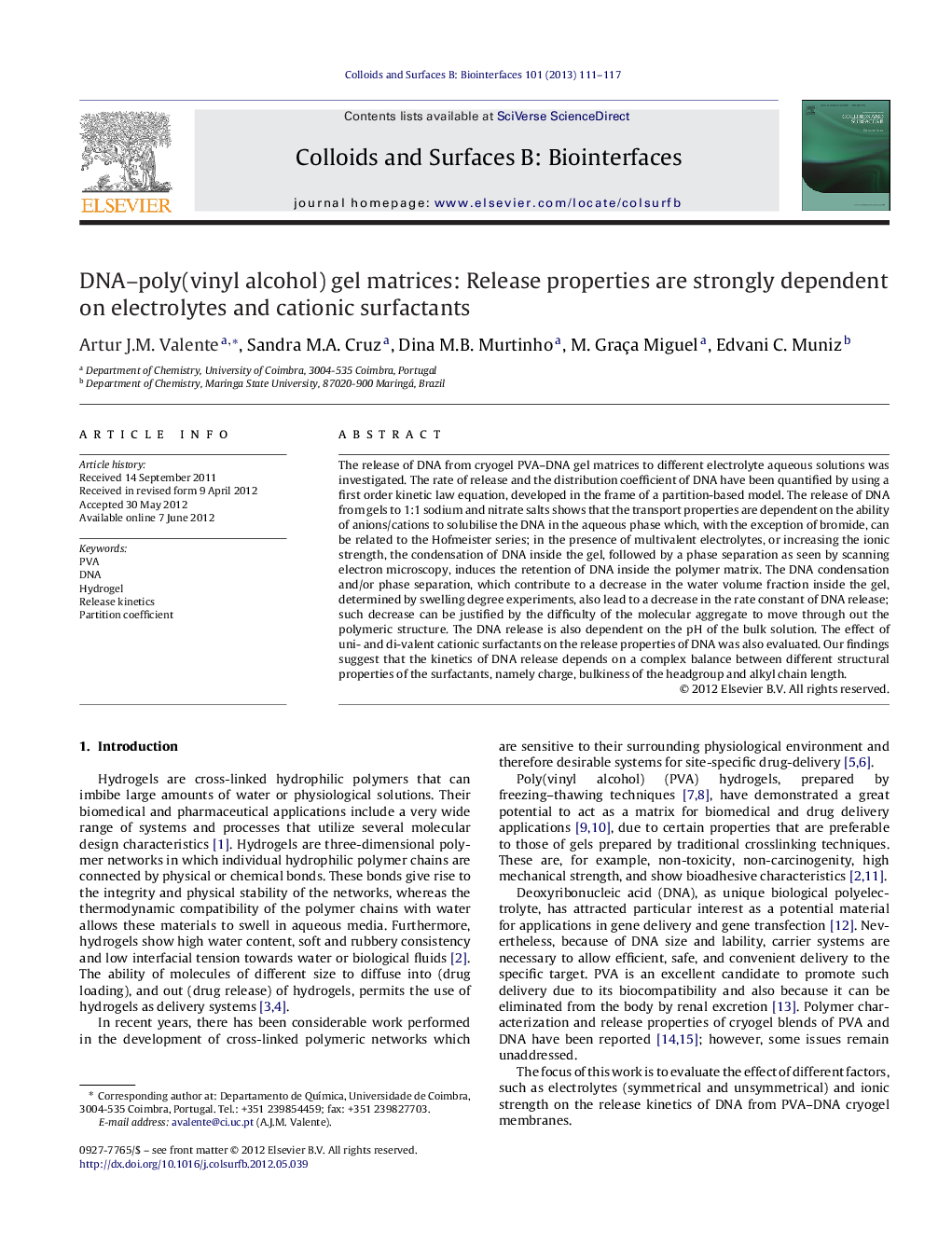| Article ID | Journal | Published Year | Pages | File Type |
|---|---|---|---|---|
| 600433 | Colloids and Surfaces B: Biointerfaces | 2013 | 7 Pages |
The release of DNA from cryogel PVA–DNA gel matrices to different electrolyte aqueous solutions was investigated. The rate of release and the distribution coefficient of DNA have been quantified by using a first order kinetic law equation, developed in the frame of a partition-based model. The release of DNA from gels to 1:1 sodium and nitrate salts shows that the transport properties are dependent on the ability of anions/cations to solubilise the DNA in the aqueous phase which, with the exception of bromide, can be related to the Hofmeister series; in the presence of multivalent electrolytes, or increasing the ionic strength, the condensation of DNA inside the gel, followed by a phase separation as seen by scanning electron microscopy, induces the retention of DNA inside the polymer matrix. The DNA condensation and/or phase separation, which contribute to a decrease in the water volume fraction inside the gel, determined by swelling degree experiments, also lead to a decrease in the rate constant of DNA release; such decrease can be justified by the difficulty of the molecular aggregate to move through out the polymeric structure. The DNA release is also dependent on the pH of the bulk solution. The effect of uni- and di-valent cationic surfactants on the release properties of DNA was also evaluated. Our findings suggest that the kinetics of DNA release depends on a complex balance between different structural properties of the surfactants, namely charge, bulkiness of the headgroup and alkyl chain length.
Graphical abstractFigure optionsDownload full-size imageDownload as PowerPoint slideHighlight► DNA release from PVA gel matrices to electrolyte and/or cationic surfactant solutions follows a first-order kinetic law. ► The effect of different electrolytes on the DNA release properties does not completely follow the Hofmeister series. ► In the presence of multivalent cations the release of DNA is accompanied by the formation of skin-like layer on the gel surface. ► The rate constant for DNA release increases by increasing the alkyl chain and charge of cationic surfactants. ► In the presence of cationic surfactants a skin on the PVA–DNA gel surface is formed.
